Takeshi Nagata scrolls through his phone, checking forecasts. His face turns pensive. It's a crystalline autumn Wednesday lunchtime in Tohoku, Japan's fabled Deep North all lit with sunshine. But around Kamaishi there is speculation that nature is up to her old tricks again: that the typhoon rolling towards the southeast of Honshu might visit their valley on the very Sunday afternoon that Canada and Namibia are due to play there in the World Cup. And that the game may be cancelled.
You have to understand: they’ve been waiting for this day for years. The stadium is gleaming and ready. You don’t have to speak Japanese to understand how proud, how unabashedly proud, everyone here is of this place. You just have to look at their faces. Built on the very location of the Unosumai elementary school, one of the first buildings destroyed by the Tohoku tsunami, it’s not just a sports ground. It’s a symbol of the fact that Kamaishi, once a force of uncomplicated industrial prosperity, is still here at all.
Earlier in the morning, standing above the stadium tunnel, Taro Uraki had described how the place had looked in those nightmare vistas after the tsunami had obliterated the town. There was ruin everywhere, but what always stayed with him was the sight of a car protruding from the third floor classroom, as a toy might be placed by a child imagining chaos.
“I’ve been really touched by the fact that there were these schools here. And then for a long time, after they were demolished, there was nothing at all here. And now we have this.”
A lot of thought went into the construction of the stadium. In the beginning, it caused some conflicted emotions. Was it right to build a sports ground on a place that could evoke such painful emotions and images? But in time, it came to be the regarded as the perfect response. The stadium is gorgeous, 16,000 seats, simple and understated. They used wood saved from cedar trees caught in a forest fire in the Ozaki peninsula to build the bleachers and some of the hospitality rooms.
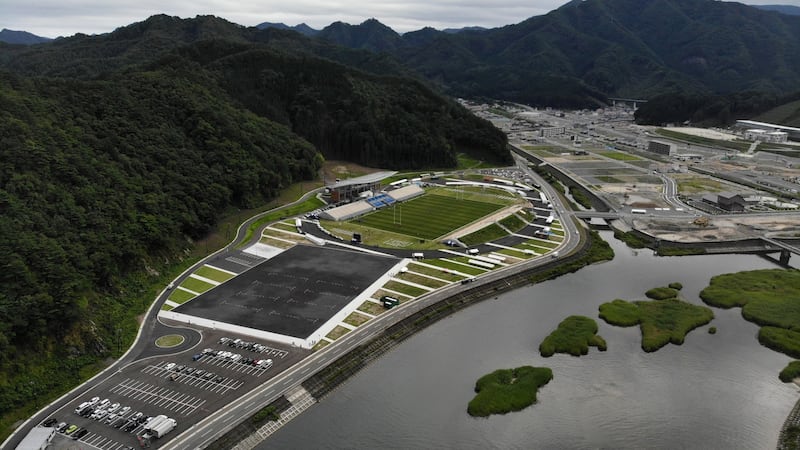
The breeze catches the cedar scent. It is located just a few hundred metres from the coast and so it has two evacuation routes. In Kamaishi, they hold annual drills so they know what to do if the ground shakes, if the sea comes. Supposing this happens when there is a game on? They will run to the new school, visible from the stadium and on higher ground. Or they will move to the path cut through the mountain behind the main stand.
The stadium has two underground storage tanks holding 100 tonnes of drinking water and the same of collected rain water. The sea wall has been reinforced once more to fourteen and a half metres: it is the highest in the world. So they believe they will be ready when the ocean next cascades towards the town. But this weekend, all they want to do is to enjoy the novelty of visitors and of hosting its second and final World Cup rugby game.
Black joke
It would feel like a black joke if they were denied this by the coincidental arrival of a typhoon. So they must wait.
Takeshi is no longer a rugby player: his professional career ended when he fractured his skull playing for the Seawaves but he has retained the rangy athleticism of the scrumhalf he will always be at heart. That happened in 2013 and he was gravely ill. He explains that people in Kamaishi took care of him in a way that went beyond compassion or normal decency.
When he first came to Kamaishi for the 2009 season, he'd get back slaps and wishes of encouragement from the locals who will always associate rugby with the town's celebrated Nippon Steel team, the company side which dominated the Japanese club scene in the 1970s. He knew of the town's rugby tradition and its industrial prowess and like anyone who visits, he discovered that you don't just pass through Kamaishi: you have to actively get there.
The main train stops at Hanamaki station after a two hour journey from Tokyo. And after that, it's several more hours on a two-carriage, single engine, slow train through the mountainous countryside of Iwata. High winds regularly halt this local train. Heavy rain, too, can cancel it. Sometimes, a bear sleeping on the tracks will halt its progress.
On Tuesday night local schoolkids sat with their homework on their laps, some falling asleep until they waited for their stop. It was close to 9pm when some of them alighted at lonely, one-bulb platforms. At the Kamaishi stop, just three people got off. It’s remote and bewitching countryside: in fact the landscape around Kamaishi reminds you of nothing so much as the opening shots of David Lynch’s Twin Peaks, with lush forest mountains and mist and the river town itself secluded in a valley.
The first thing you see on leaving the station is the Nippon Steel logo on the factory. On Tuesday night, the town was empty and a cool sea breeze was ripping at the flags and bunting that the town had been dressed with for the World Cup. The Sunroute hotel lobby was gleaming and empty. Like all the buildings in the town centre, a blue plaque on its front wall represents the high water mark of the afternoon on March 11th, 2011 when, after the Tohoku earthquake, the ocean took ruinous ownership, for an hour or so, of the towns along this coastline, taking 25,000 lives and leaving behind wreckage that ran to many billions - of any currency. About half of Kamaishi was physically ruined. And a thousand of its people were killed.
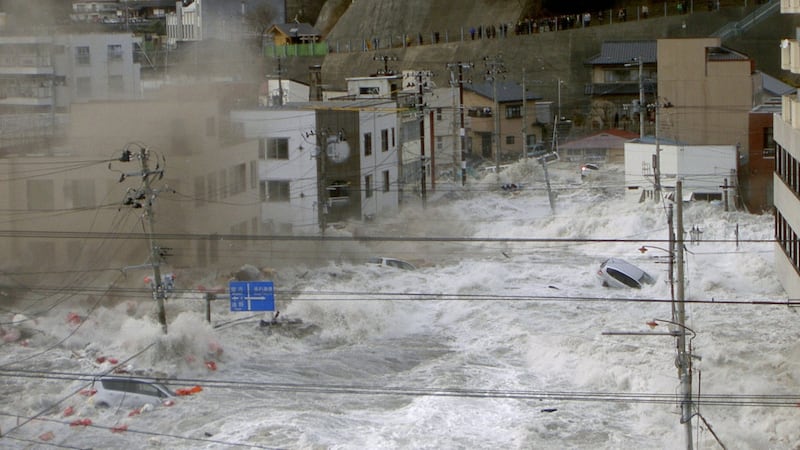
Takeshi was at home that afternoon at 2.45pm, when it started. “We were supposed to be training that evening. And the shaking was really violent. It went on for a while. I could hear people yelling in the town. So I knew it would be serious.”
Over the previous century, Kamaishi had been no stranger to brutal reckonings. The town was ravaged by a tsunami in the 1896 Sanriku earthquake. It was hit again in 1933. Because of its steel manufacture, it was heavily bombed in the last days of World War II. When Chile suffered an earthquake in 1960, a tsunami rolled through Kamaishi. That history meant that generations of Kamaishi families were raised with a shadow-awareness of this dual relationship with the sea.
Unimaginable horror
The coast has beautiful beaches and swimming and sea sports hangouts. It gave plentifully to local fishing fleets for decades. One of the town’s iconic symbols is the statue of Kannon, one hundred feet tall and cradling a fish. The disasters were stretched decades apart: just long ago make the previous horror seem unimaginable to the next generation. So it was in 2011. “I had no idea about the history,” Takeshi confesses.
Unsure of what to do then, he drove to the clubhouse, about four miles inland and met with the other professional players on the Seawaves team, trying to ascertain that everyone they knew was safe. Gradually, the local amateur players arrived. Many worked at the steel factory and it was then that they heard about the tsunami: that they’d used ropes to pull people from cars floating down the main street past the factory.
The weight of water was unfathomable: half of the town washed away. A 7,000 tonne transport ship, the Asia Symphony, had been in the harbour when the wave arrived. It was carried right like a bath toy into the centre of the town and marooned where an apartment block had an hour earlier been. Inside, its Filipino crew, terrified beyond comprehension, refused to set foot on Kamaishi soil for a full week. By then, the town was a refugee camp. Temperatures fell below freezing on the night of the tsunami and the snow came over the following week.
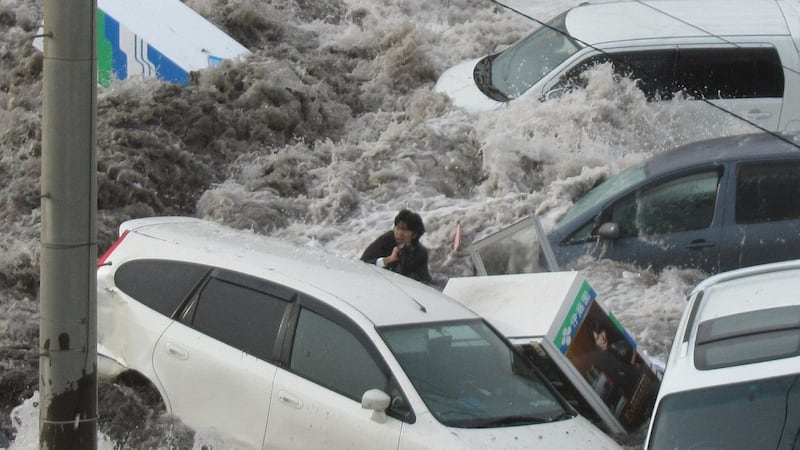
Kamaishi was just one of dozens of obliterated places along the coast. Even though they had no power or water and lit candles to see after the darkness fell, word reached them that the town of Namatakaigan was gone. That Ryoishi was gone. Tomoaki Sasaki was working in the board of education building then. After the tsunami warning siren started, he moved to the fifth floor.
“The river is next to our building. And we could see debris and cars floating down the river. Then people began to show up and they were soaked through. We used the rooms there as a kind of makeshift evacuation centre. So I was taking care of those people first. But then the defence forces came in to search for bodies throughout the city. So I was involved in that. There wasn’t enough manpower. It meant just finding people and carrying their corpses to the truck and transporting them.”
Emily Hallams from Canberra and Aisling Barry from Mallow work in the same office as Tomoaki and have offered to translate as he speaks. Both women were placed in Kamaishi through the Japan Education and Teaching programme. Because their linguistic skills are so advanced, they work in Iwata civic offices translating at business meetings. Emily has been here since 2016. Aisling arrived a year later. They are friends with Tomoaki, who is a funny and bright presence in the office, but they've never heard him speak about those days in detail before now.
“My memories of the day are still very vivid. I have strong memories. It is close by to here. We evacuated to the fifth floor of the building after the shake. It was difficult. It was an unbelievable situation. The people we found were just covered in dirt, they had all sorts of injuries. You came across people with holes in their faces and eyes missing and all kinds of terrible and dramatic injuries. There is a saying in Japan that people who must deal with circumstances go on to have longer lives. So maybe,” he says, smiling and shrugging, “I will live to be 115.”
Devastation
He nods, though, when it’s put to him that the scale of death and the scale of devastation had a profound effect on everyone. Kamaishi is dressed in its best for the World Cup and in early autumn is magisterial anyway. But Tomoaki only has to look out the window to summon instant recall of his ruined town.
“During all of this, I became sort of desensitised to the whole process. It happened day after day - having to go out and look for bodies and bring them back. But once that was over, I did sit down and talk with someone and get my thoughts together. And it was then I began to look around at the people who survived and enjoy life. And I realised that as a human being, if you don’t put that behind you then you will be broken as a person forever.”
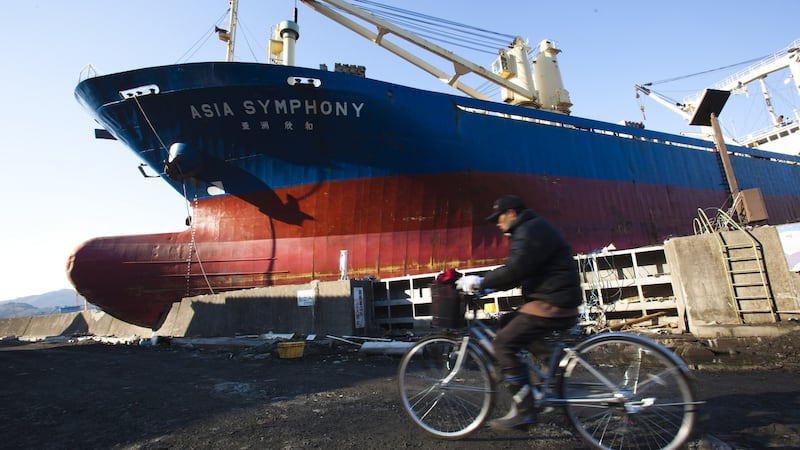
It would, of course, be ridiculously surface to pretend that Kamaishi regenerated its soul primarily through rugby. That came through its people. But it is true that in the weeks after the tsunami, Takeshi and the other Seawaves players were encouraged and finally asked to get back to training to at least give the townspeople one illusion of normality.
“When you are living as a rugby player, it is the number one thing you think about. But it wasn’t on my mind at all,” he says. “The results of our games that year weren’t noteworthy. We weren’t even that worried about it. We were just so happy to be able to do what we did best and to do something that gave people enjoyment. But for the Seawaves, we were never stronger as a group of people.”
For Tomoaki Sasaki, that season was redolent of a childhood when rugby was inescapable. He didn’t play but the town’s bars were decorated with photographs of the unconquerable Steel teams, who were like the sporting symbol of Kamaishi’s vitality.
“There’s a few reasons why rugby became big here. One is that here in Tohoku it is cold but has beautiful nature and scenery so rugby was suited to the environment. And then, a lot of the players were working in the steel factory during the day. Physical work. Then they would train. So it all contributed to the rugby.”
When Tomoaki was a teenager, one of the big television shows was called School Wars, featuring games between the leading rugby schools. Kamaishi was one of the leading lights.
“Even if you didn’t play, you watched the show. And it drew a lot of people to rugby.”
By the time Emily and Aisling came to work here, the heart of the town had been rebuilt but the physical and psychic energy of what had happened was and remains close to the surface. They both came here straight from college and you can tell the place has disarmed them. The population is around 30,000 now and in keeping with Japan’s dramatically shrinking population, it is going to dip further.
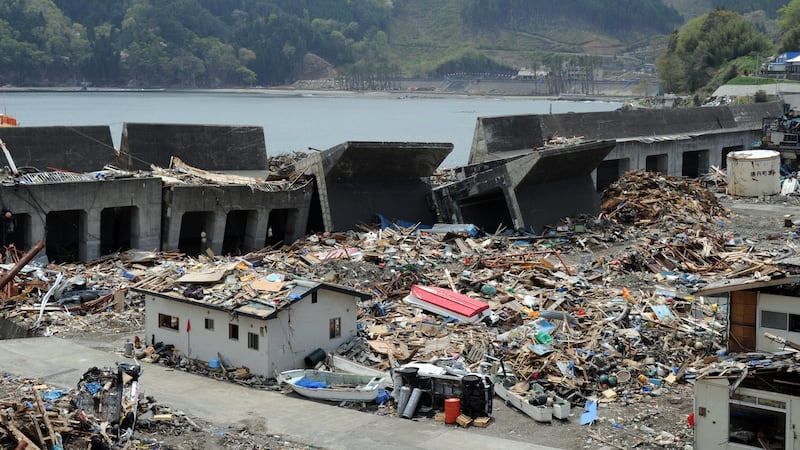
For a while, Aisling Barry was the only Irish person in the entire Iwata prefecture. She went through a long and rigorous process to get on this work programme. Emily was there to meet her at the station the day she arrived, bamboozled with jet lag and with only sketchy details of what to expect. Winters are cold and dark but there are ski mountains close by and gorgeous hikes and the air is fresh.
Optimism
It would be wrong to think of this town as somehow haunted. The locals have re-imagined Kamaishi with a sense of vigour and optimism that disarmed both of them. On this day, for instance, the sea was calm and dreamy: it was impossible to imagine it any other way. “You hear a lot of people here talking about the co-existence with sea,” Emily says. This idea that it gives and it takes away.”
Naturally, their families were alarmed at the thought of their living in a town with such a volatile relationship with the natural world. But they have visited the place and its solidity, its people reassured them. Neither Aisling or Emily would describe themselves as rugby fans. But they go to watch the Seawaves games and go the izakayas afterwards. People in the town like to have fun, to celebrate, to have a few drinks. The translating work they do here can be intensely hard but rewarding and living in Kamaishi has given them an extraordinary few years.
“I feel like my whole way of looking at life has changed,” says Aisling Barry. “After the stories you hear. What is in front of you now is important and you value what you have. Last week I spoke with a girl who was a student at that school. And she said it was at that moment she realised just how important the friends around her were. I think for people here, the tsunami is something that is best to think about because they really ingrain the idea of thinking for a disaster. So we do drills. We have emergency supplies in the house. We have had big typhoons but nothing disastrous since I have been here. But people here don’t want it to be forgotten about.”
For the past year, much of the local civic energy has been channelled towards readying Kamaishi to host its two World Cup games. This week, the town has that spruced up look of a newly laid table awaiting the arrival of guests. Several months ago, a local lady began turning up every day at the World Cup centre, using material recycled from kimonos and embroidering them into tiny purses. They couldn’t figure what she was doing until she presented them with a gift: she had made 20,000 handkerchief holders to be given to the spectators at the games. It was her way of saying thanks.
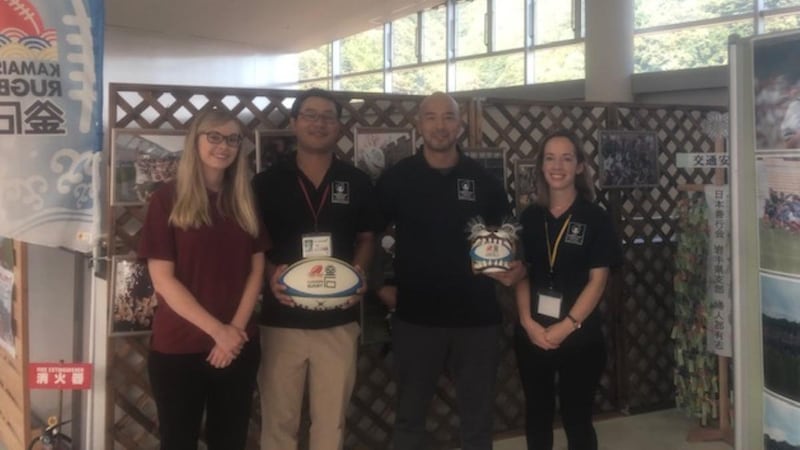
After the tsunami, donations of clothing, food and bedding began to arrive from all over the world. Japanese culture is formal about gift and reciprocity. This deluge of generosity from overseas left the Kaimaishi locals profoundly touched and at a loss as to how to respond. After all, they had known their age of roaring success. When the steel furnaces were busiest, in the decades after the second World War, 100,000 people lived in the town. Fishing was booming. There was money.
“No, no, no, it is nothing like it was then,” says Maeda Shigeru, whose parents owned a shop in the town during its peak years. “Absolutely changed. There were not so many high buildings but many people always walking and moving and running. Kamaishi was just . . . so busy. “
He moved away after finishing school and lived in various parts of the world through his business life but retired now, he felt the pull of Kamaishi and returned to help out for the World Cup. Just this week, he bumped into a classmate he hadn’t seen in 57 years. It has been a strange time, with past and future mingling.
“I am very anxious about is what will happen after the rugby,” he says gravely. “People here have been suffering. They are very much tired, not physically but mentally. So they sometimes forget to fight to go forward. So those kind of mental securities . . . how we can manage this after the rugby?”
It’s maybe one of the reasons that Takeshi Nagata has chosen to remain in the town. And why Emily Hallams and Aisling Barry can concede the place has left an indelible imprint on them.
“There’s just this really good energy here,” Emily says. “You meet these incredibly positive happy people. And then maybe two years later, you find that they have lost family in the tsunami. Even if I don’t live here I will be coming back here all the time. I feel like we have both grown up here.”

At the Ireland v Japan game, Aisling Barry wore her green shirt and hat and went to the fanzone. Half the town was there, decked out in Brave Blossoms gear. After Japan had won, people came up to her apologising in case she was distressed or upset. "They were actually saying sorry for winning." she laughs
So it's not the actual rugby games that are truly important. It's what they mean in Kamaishi - that sense of grabbing hold of the good stuff. The first game between Fiji and Uruguay was a ceremony played out in front of an international media presence. Sunday's game will to be slightly more low-key and easy going. School kids from the other towns ravaged by the tsunami have been invited. It should be a moment for them all: just sitting there amid all that autumn colours of Tohoku to remember and think: here we are, after everything.
“I think Japanese culture as a whole is so much better at the whole ‘time-is-fleeting’ idea anyway,” Emily says.
Maeda Shigeru will leave Kamaishi when the tournament ends. It’s not the teeming, prosperous place of his youth but the spirit is the same. And this weekend with Namibians and Canadians wandering through town will be special. It will be a victory. His face turns serious and he thinks hard for a moment when he is asked if Kamaishi will be ready if and when the next wave comes, as come it must.
“Yes. Yes,” he says finally. “But, ahh, I think, too, that nature is . . . always stronger than mankind.”













